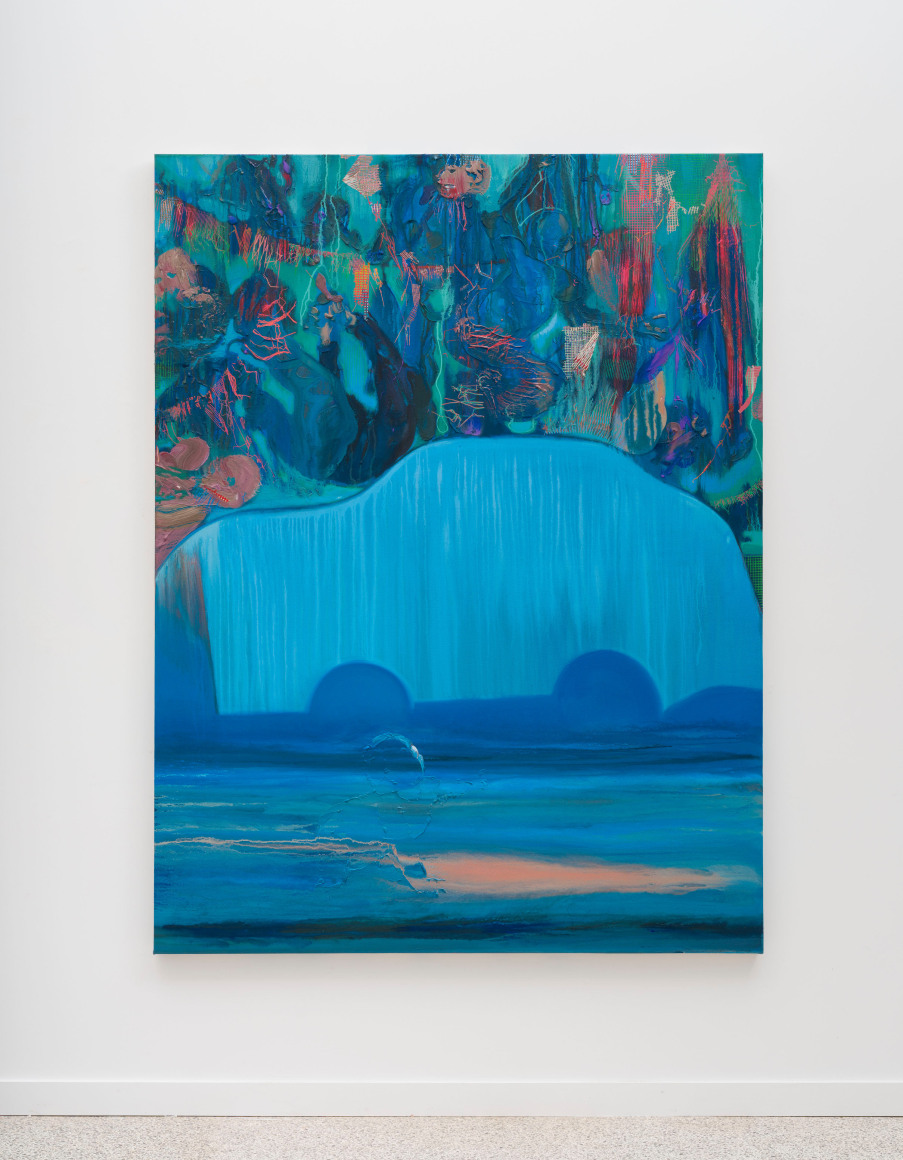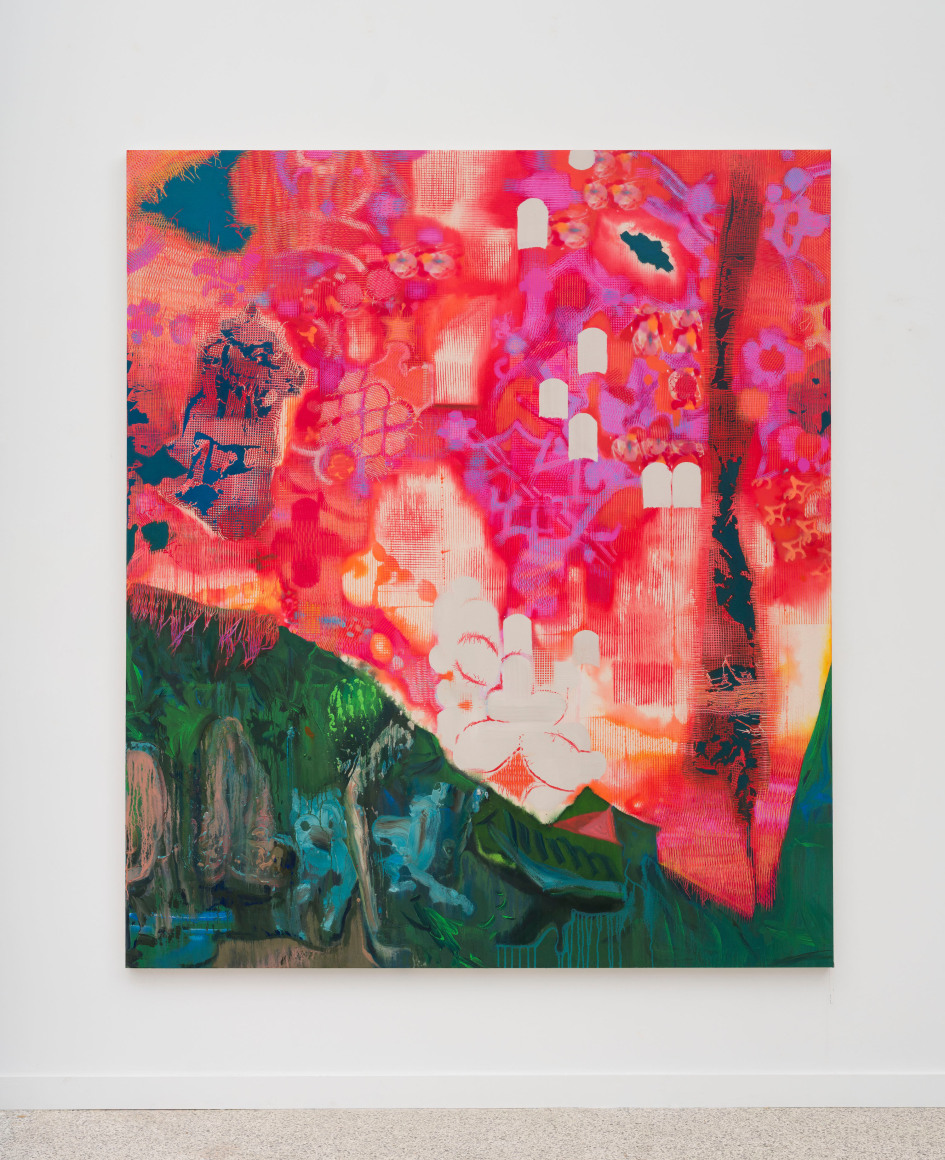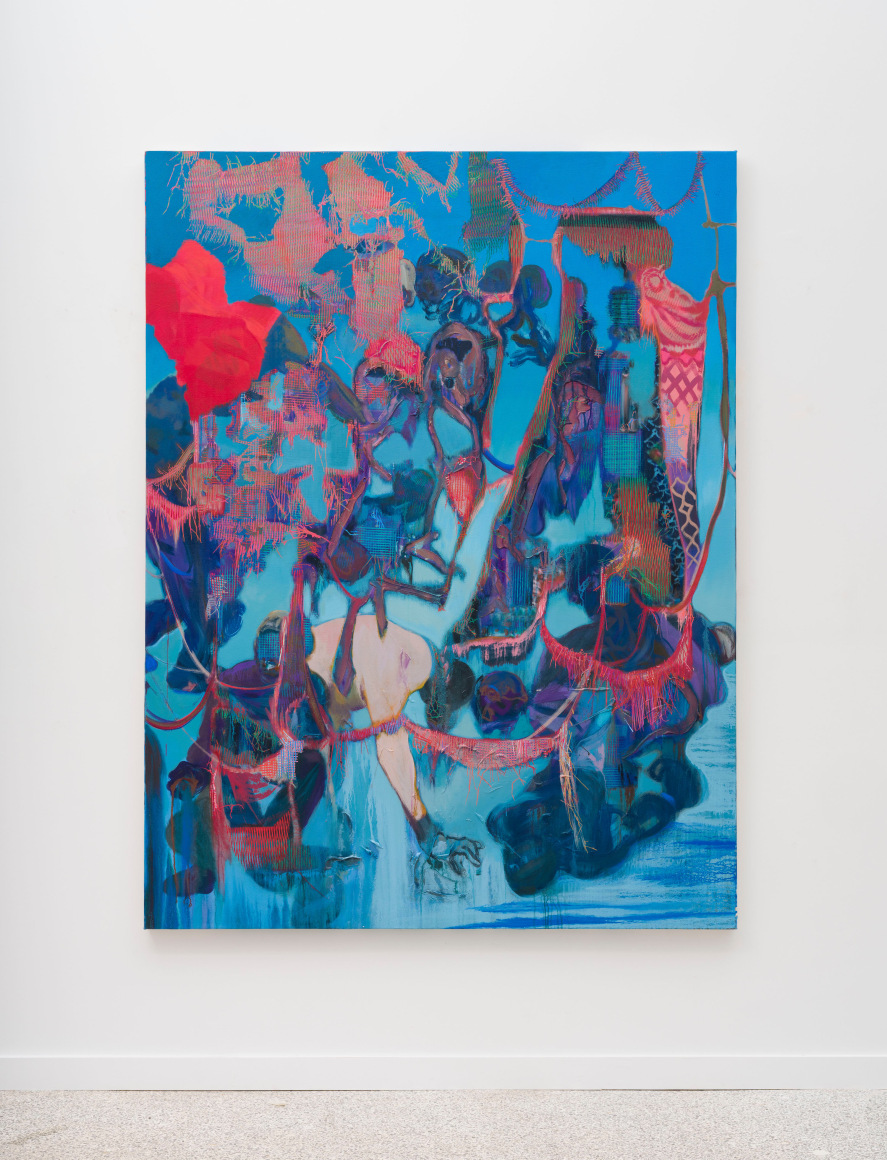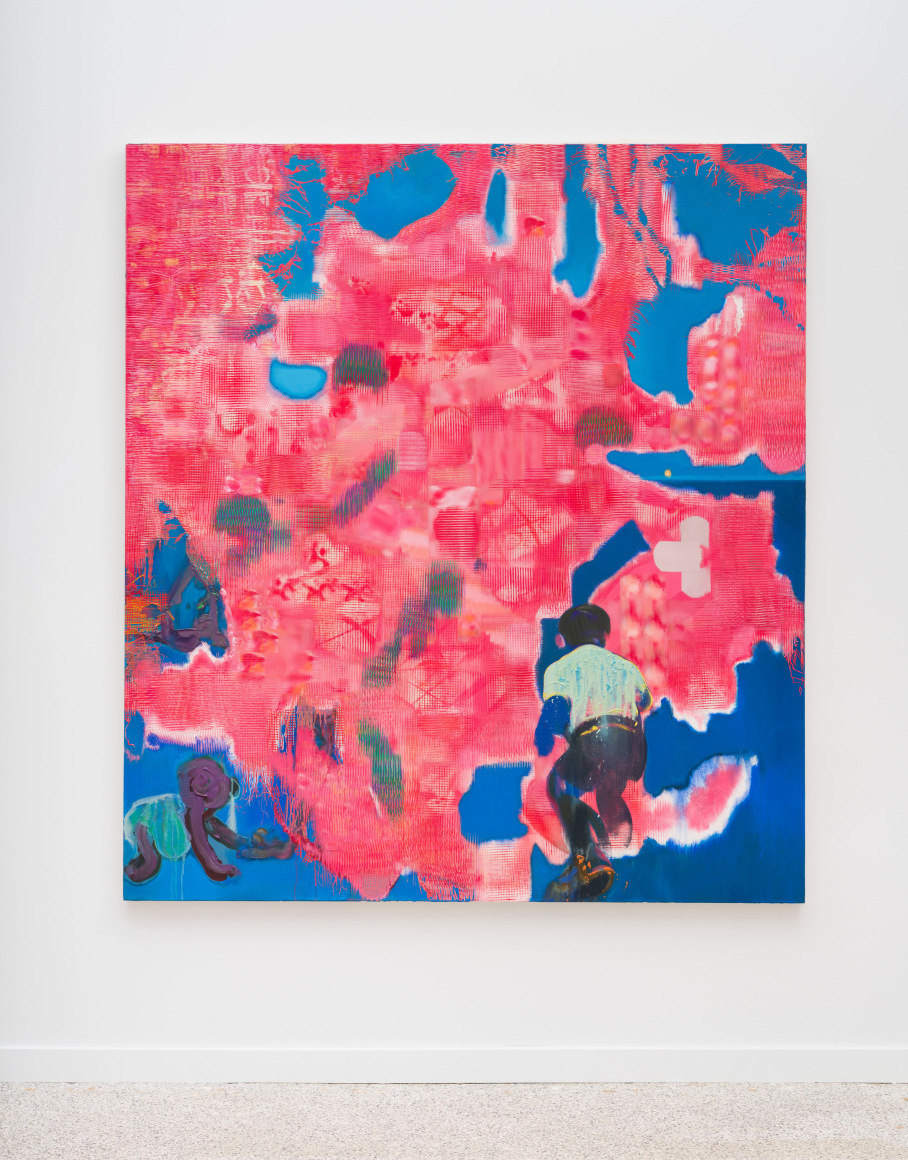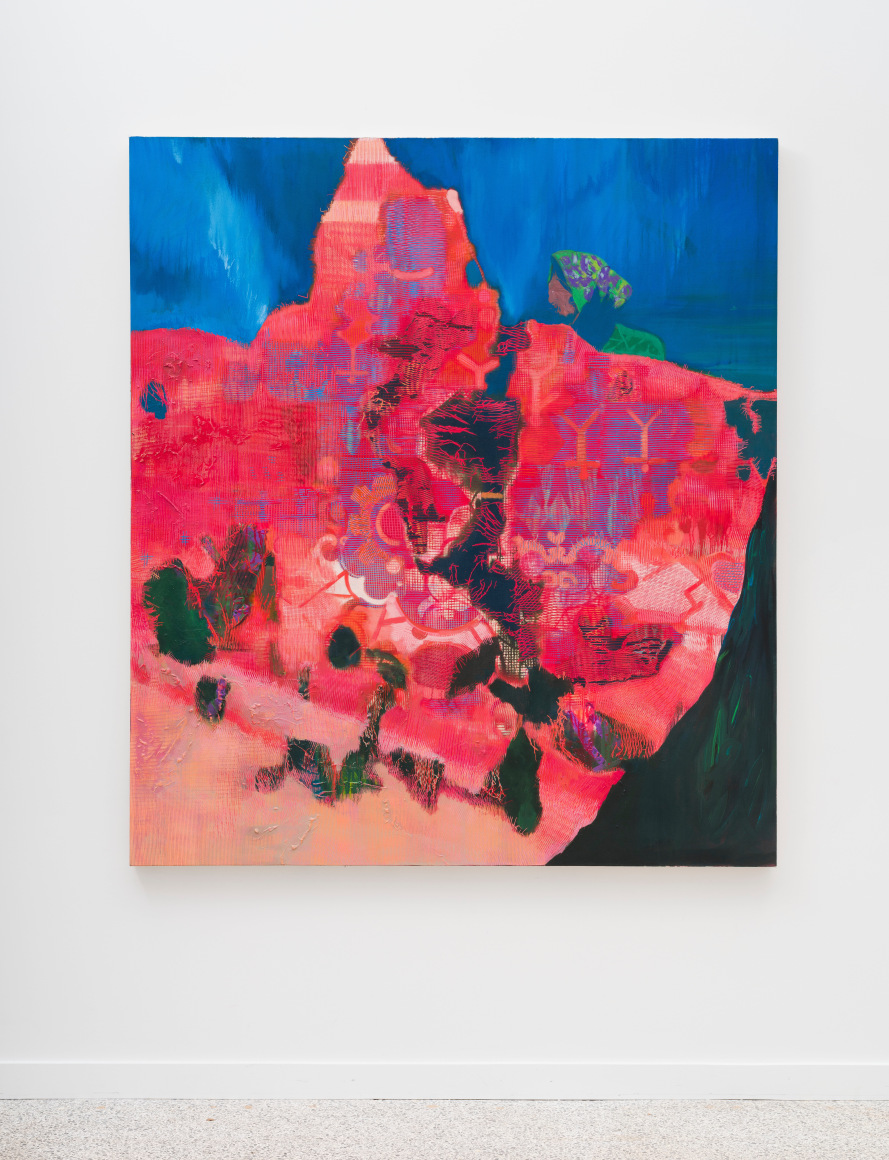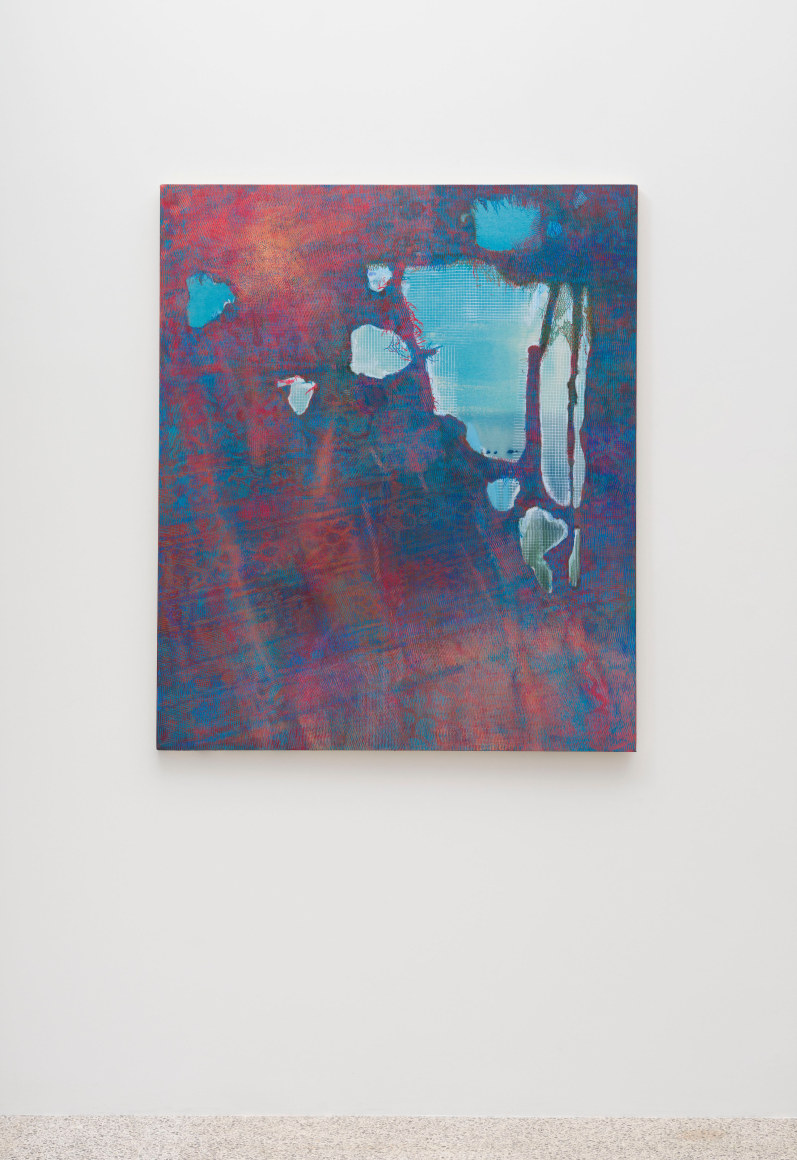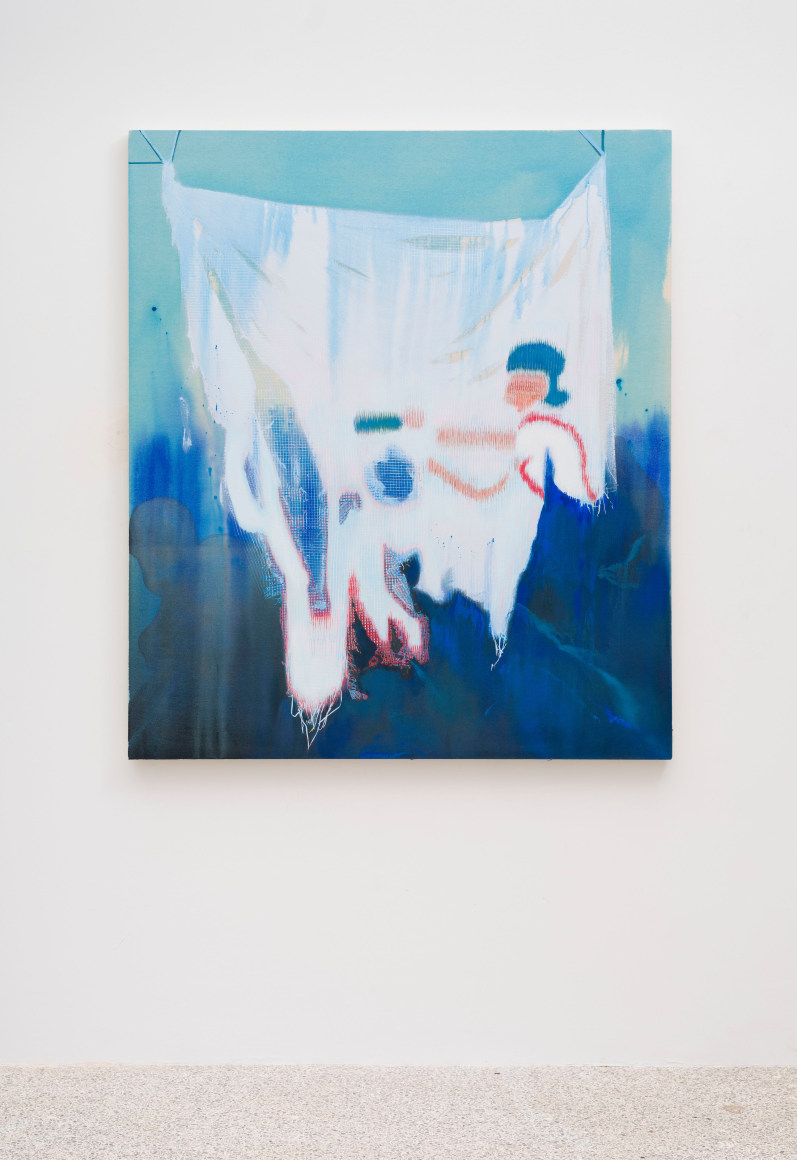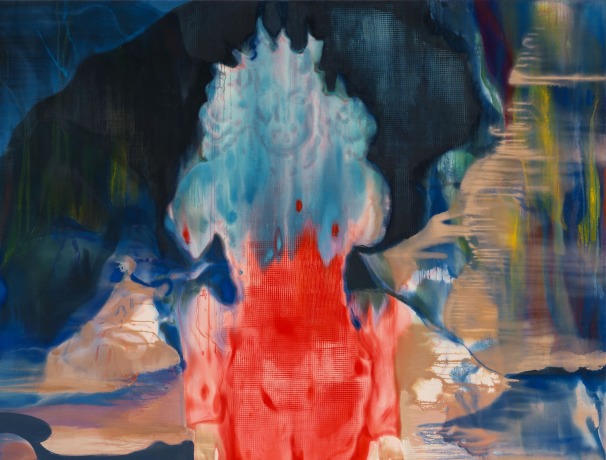
GAVLAK Palm Beach is pleased to announce Loom, a solo exhibition of new paintings by Taha Heydari. Loom represents the culmination of Heydari’s engagement with Persian rugs as a paradoxical embodiment of transcendental authority and quotidian materiality. Displaced from their conventional settings, Heydari’s ornately painted rugs appear suspended in a dystopian twilight in which they unravel, revealing narratives which had been lost between the fibers. An artist talk with Taha Heydari and Asma Naeem, the Dorothy Wagner Wallis Director at the Baltimore Museum of Art will take place on Saturday, February 18th at 4 pm, coinciding with the opening reception for the exhibition from 4 to 6 pm. Loom will be on view from February 9 – March 5, 2023 at GAVLAK’s Palm Beach location.
With the Persian rug, Heydari returns to the site where he spent much of his life as a child and young adult living in Iran. The rug literally grounds the lives of individuals, families, and Iran itself, embedding and sealing these memories within its warps and wefts. It is mundane in its ubiquity across all spaces of Iranian life, yet mystified in its status as a historically loaded and culturally revered object. As Heydari learned as a young student of classical Persian miniature painting, traditional crafts are performed under highly structured processes. These objects transcend their own materiality and become sacred and impenetrable. Heydari understands this transcendence as a product of ideology, which conceals its own construction in the overlooked details of the everyday.
In Loom, interwoven threads of meticulously painted rugs emulate the texture of the canvas itself, insisting on the rugs’ fragile materiality in spite of their storied cultural history and enduring presence in Iran. But the detailed quality of these surfaces also evokes the immaterial. Aligning weaving with coding, their geometric patterns and grids—typical of traditional gabbeh textiles—recall eight-bit video game graphics. Warps and wefts operate like zeroes and ones. Still, in keeping with the “glitched” imagery that is the consistent hallmark of Heydari’s painting practice, these codes seem to break down, producing tatters and loose threads which take on an uncanny bodiliness.
By performing an “autopsy” on the Persian rug, Heydari reveals its internal structure and breaks the illusion of wholeness which similarly enshrines ideology. In his paintings, some rugs appear partially intact while others have been reduced to shreds. Bodies begin to emerge from behind these fragments, in some instances becoming entangled in their sinewy fibers. The flatness of the painted rugs interrupts the nebulous depth which envelopes the figures and drags them downward. These scenes seem to pour out from the splintering threads, much like dust and detritus beaten out from rugs that have been strung up for cleaning. The obscured yet recurring motif of crawling infants signals a new, constantly unfolding present and a critical shift in perspective. Under the looming weight of time, Heydari’s painted rugs crumble and unravel.
Written by Maura Callahan

